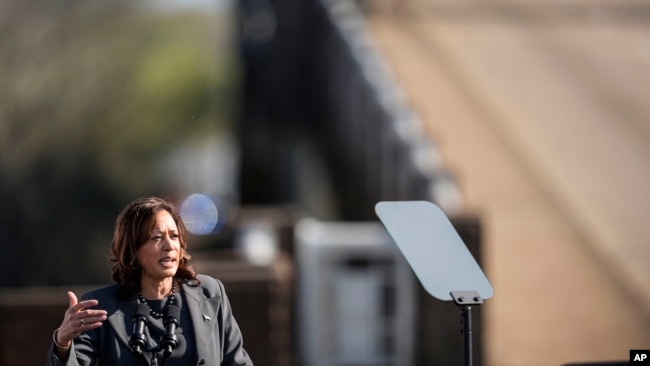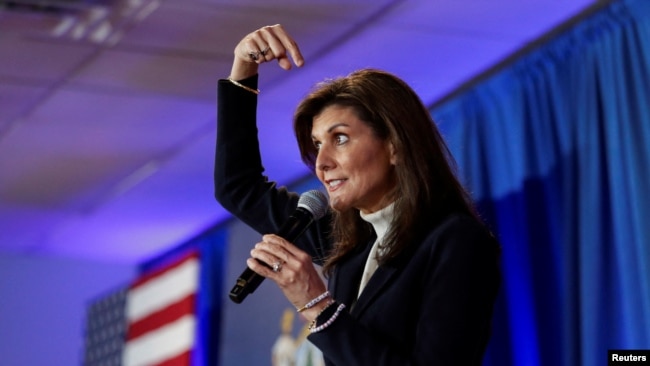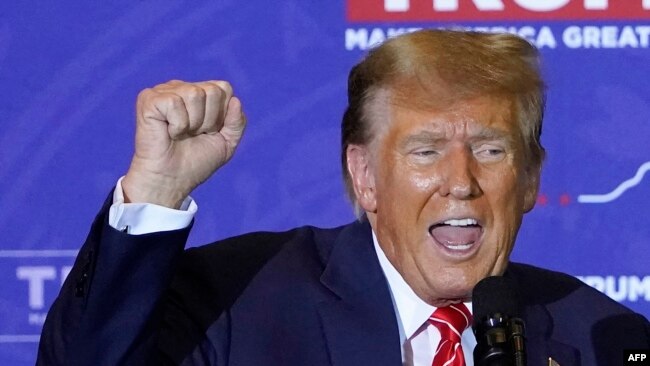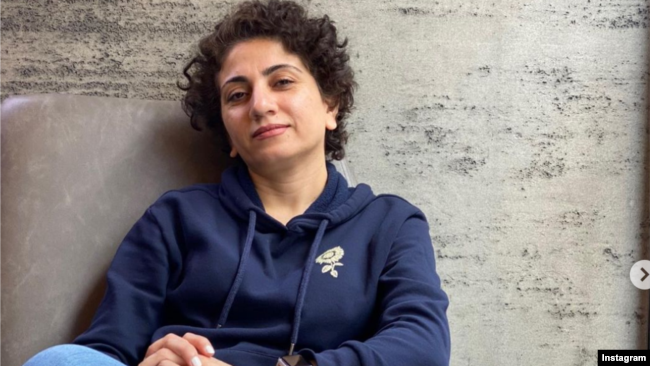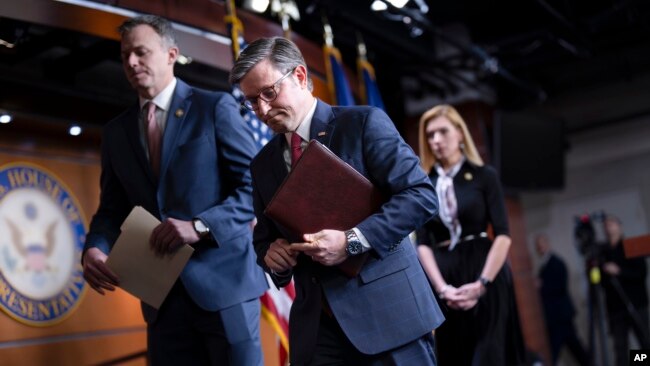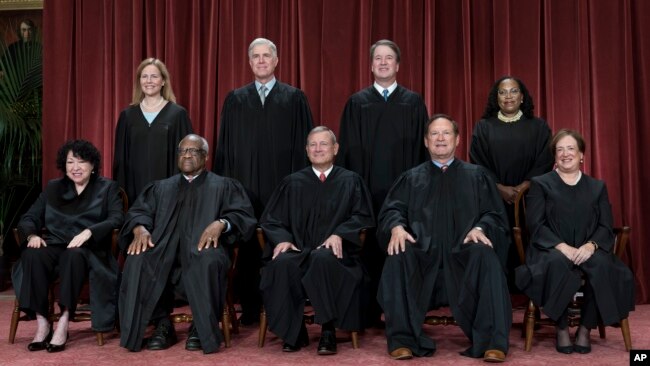COVID-19가 미국 오피스 패션을 변화시킨 방법
How COVID-19 Changed US Office Fashion
페이지 정보
작성자 By Dora Mekouar 작성일 24-02-13 08:42 댓글 0본문
미국의 모든 것 미국의 문화, 정치, 유행, 역사, 이상과 관심 있는 장소를 탐구합니다.
All About America explores American culture, politics, trends, history, ideals and places of interest.
시카고에 본사를 둔 양재사이자 디자이너인 크리스틴 마리아니(Kristin Mariani)가 출근할 때, 그녀는 사람들이 팬데믹 이후 사무실을 위해 옷을 입는 방식의 변화를 알아차립니다.
When Chicago-based dressmaker and designer Kristin Mariani commutes to work, she notices a change in how people dress for the office post-pandemic.
"사람들은 더 편안하게 옷을 입고 있습니다," 라고 시카고 아트 인스티튜트의 마리아니 부교수가 말했습니다. "저는 정장과 넥타이를 입은 사람을 거의 보지 못합니다. 저는 아마도 재킷과 오픈 셔츠가 있는 청바지를 자주 볼 것입니다."
“People are dressing more comfortably,” says Mariani, an adjunct assistant professor at the School of the Art Institute of Chicago. “I rarely see a person in a suit and tie. I often will see jeans with maybe a jacket and an open shirt often.”
많은 미국인들은 코로나19 팬데믹으로 운동복 바지처럼 편안한 레저복 차림으로 재택근무를 하며 보냈습니다. 한편, 여전히 직접 출근 신고를 해야 하는 노동자들도 좀 더 여유로운 모습을 택했습니다.
Many Americans spent the COVID-19 pandemic working from home in comfortable leisurewear like sweatpants. Meanwhile, workers who still had to report to work in person also opted for a more relaxed look.
"우리가 원격지로 가서 여전히 일상적인 업무를 진행해야만 했을 때, 캐주얼한 사무복이 사무복의 주류가 되었습니다"라고 켄트 주립 대학의 패션 대학 교수인 힐러리 스톤은 말합니다.
“When we went remote and we still had to move forward with our day-to-day operations, the casual office attire became the mainstream in-office dress,” says Hillary Stone, a professor in the school of fashion at Kent State University.
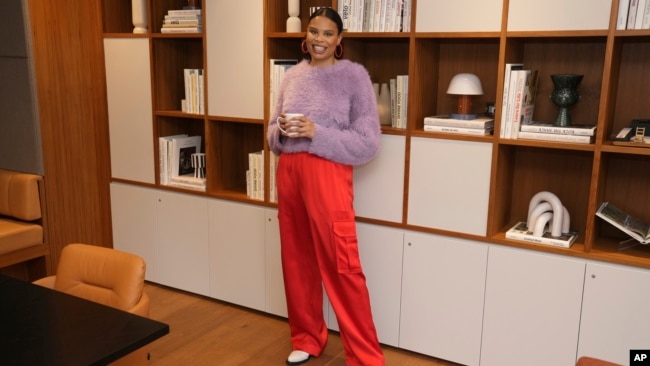
"IWG 연구: 하이브리드 세계에서 오피스 패션의 진화"에 따르면, 18세에서 24세 사이의 근로자들 중 10퍼센트는 그들의 고용주가 오피스 드레스 코드를 가지고 있는지 여부를 전혀 알지 못합니다
Ten percent of workers aged 18-24 have no idea whether their employers have an office dress code, according to the "IWG Study: The Evolution of Office Fashion in a Hybrid World."
그 추세는 팬데믹 이후에도 계속되어 왔다고 스톤은 말합니다. 의류 회사들은 일하는 동안 편안하게 옷을 입는 데 익숙해진 노동력의 요구를 해결하기 위해 전환했습니다. 그렇게 하는 한 가지 방법은 더 많은 것을 주는 재료로 전통적인 사무실 조각을 만드는 것입니다.
That trend, Stone says, has continued after the pandemic. Clothing companies pivoted to address the needs of a workforce that has grown accustomed to dressing comfortably while they work. One way to do that is to make traditional office pieces out of material with more give.
"구조화되지 않은 정장 재킷과 넓은 다리의 바지가 지금 입고 있습니다."라고 스톤은 말합니다. "그들은 전통적인 보수적인 디자인을 취하고 있고 우리가 보는 데 너무 익숙한 직물을 바꾸고 있습니다. … 그것은 더 부드러운 외관을 만듭니다. 그것은 더 캐주얼한 외관을 만듭니다. 그것은 보수적이지 않습니다. 그것은 그렇게 뻣뻣하지 않습니다."
“The unconstructed suit jacket is really in right now, and the wide-leg pants,” Stone says. “They're taking traditional conservative designs, and they're changing out the fabrics that we’re so used to seeing. … It creates a softer appearance. It creates a more casual appearance. It's not as conservative. It's not as stiff.”
팬데믹은 특히 셧다운 기간 동안 많은 사람들이 쇼핑을 많이 하지 않았기 때문에 사람들이 지속 가능한 패션에 대해 더 많이 생각하게 만들었습니다. 그리고 공급망 문제로 인해 기업들은 프로세스를 검토하게 되었습니다.
The pandemic also made people think more about sustainable fashion, especially since many didn’t shop as much during the shutdown. And supply chain issues prompted companies to examine their processes.
"기업, 디자이너, 상인들은 어떻게 제품을 만들고, 개발하고, 생산하고, 전달 체계를 다르게 보고 있습니다."라고 스톤은 말합니다. "그리고 저는 그것이 바로 우리가 차이를 보고 있는 부분이라고 생각합니다. 지속 가능성이 모든 것입니다. 순환 경제가 오늘날 모든 것입니다. 왜냐하면 우리는 우리가 사용하고 있는 것과 제조하고 있는 것과 그것을 어떻게 다시 사용할 것인지에 대해 더 현명하게 생각해야 하기 때문입니다."
“Companies, designers, merchants, they're looking differently at how to create, develop, produce and the delivery system of product,” says Stone. “And I think that's where we see the difference. Sustainability is everything. Circular economy is everything today, because we need to think smarter about what we're using and what we're manufacturing and how to use it again.”

"IWG Study: The Evolution of Office Fashion in a Hybrid World"에 따르면, 더 많은 고용주들이 하이브리드 스케줄을 시행함에 따라, 직원들은 더 편안하고 그들의 개인적인 스타일을 더 잘 반영하는 옷을 입는 것에 영감을 느낍니다
As more employers implement a hybrid schedule, employees feel inspired to wear clothes that are more comfortable and better reflect their individual style, according to the "IWG Study: The Evolution of Office Fashion in a Hybrid World."
팬데믹 이후, 많은 사람들이 일주일 중 일부를 집에서 일하는 하이브리드 스케줄로 전환했습니다. 최근 보고서에 따르면 적절한 사무복으로 간주되는 것이 개인의 스타일과 편안함에 대한 중요성이 커졌습니다.
After the pandemic, many people transitioned to hybrid schedules, working part of the week from home. A recent report finds that what is considered appropriate office wear has evolved, giving increased importance to individual style and comfort.
스타일리스트이자 크리에이티브 컨설턴트인 다이애나 추이(Diana Tui)는 보고서에서 "팬데믹으로 인해 기업들은 근로자들이 자신의 개인 스타일을 반영한 의상을 입을 수 있을 때 최고의 기분을 느꼈다는 것을 깨달았다"고 말했습니다. "팬데믹 이후, 우리는 모두 우리의 외모에 약간의 재미를 느끼고 싶어하며, 하이브리드 작업은 창의성과 유연성을 가능하게 합니다."
"The pandemic made companies realize that workers felt their best when they were able to wear outfits that reflected their personal style,” Diana Tsui, a stylist and creative consultant, said in the report. “Post-pandemic, we all want to have a little fun with our looks, and hybrid working allows for creativity and flexibility.”
그리고 남자들이 사무실에 무엇을 입고 가는지에 관한 한 그 어느 곳에서도 그것이 가장 명확하지 않습니다.
And nowhere is that more apparent than when it comes to what men wear to the office.
조사 대상자의 79%가 유연한 근무 일정 때문에 옷을 다르게 입는다고 답한 반면, 남성의 85%는 근무 복장이 바뀌었다고 응답했습니다.
While 79% of people surveyed said they dress differently as a result of their more flexible work schedule, 85% of men reported a shift in their work attire.
"남성 패션이 폭발적으로 증가하고 있습니다."라고 스톤은 말합니다. "남성들이 원하는 것, 그들은 대안을 원합니다. 그리고 그들은 매우 창의적인 것을 원하고, 영리하고 재미있는 것을 원하고, 스타일리시한 것을 원합니다."
“Men's fashion is exploding,” Stone says. “What men want now, they want alternatives. And they want something that's very creative, and they want something that's clever and fun, and they want stylish.”
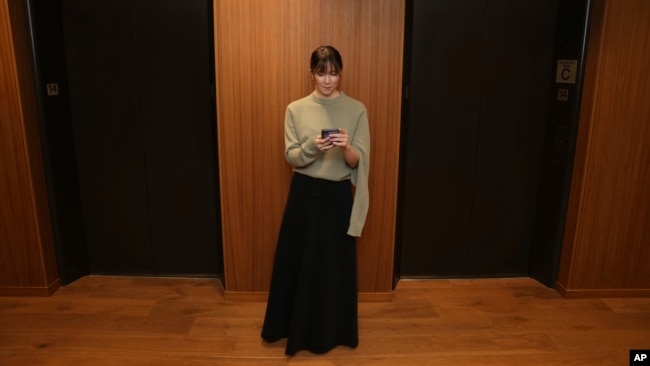
Kent State University의 패션 교수인 Hillary Stone에 따르면, 드레스와 긴 치마가 돌아오면서, 오피스 패션은 다시 더 격식을 차릴지도 모른다고 합니다.
With the return of dresses and longer skirts, office fashion might be becoming more formal again, according to Hillary Stone, a fashion professor at Kent State University.
그리고 의류 회사들이 편안한 사무복을 제공하는 데 집중하고 있지만, 편안한 시간이 끝날지도 모른다는 신호들이 있습니다.
And while clothing companies are focusing on providing relaxed office wear, there are signals that easy-comfort times might be coming to an end.
"캐주얼 드레스 코드에 들어갔고, 가장 최근에는 약간 뒤로 이동하고 있습니다."라고 스톤은 말합니다. "그것은 약간 뒤로 이동하고 있습니다 – 더 보수적이고, 미적이고, 겉모습은 말하고 싶지 않지만, 그것이 하는 일은 점점 더 격식을 차리고 있습니다. 그래서 여러분은 많은 드레스를 보고, 미디 길이를 보고, 더 긴 치마를 보고, 슬랙스를 보고 있습니다."
“It went into a casual dress code, and it's moving slightly back most recently,” Stone says. “It is moving slightly back to — I don't want to say a more conservative, aesthetic and appearance — but what it's doing is becoming more formal. So, you're seeing many dresses, midi length, you're seeing longer skirts, you're seeing the slacks.”
대학생들에게 패션 디자인을 가르치는 마리아니는 코로나19가 사무실 복장에 대한 기대를 영구적으로 완화시켰다고 말합니다.
Mariani, who teaches fashion design to college students, says COVID-19 has permanently relaxed expectations around office attire.
"아직도 정장 입는 것을 정말 좋아하는 사람들이 있을 것이고, 그들은 정장을 입을 것입니다. 그리고 만약 여러분이 카키스와 단추가 달린 셔츠를 입고 나타나서 필요할 때 재킷을 걸쳐도 괜찮을 것입니다," 라고 마리아니가 말했습니다. "저는 이 두 가지 모두가 유효한 옷차림으로 인정받을 것이라고 생각합니다. 저는 이 엄격한 규칙들이 더 이상 적용되지 않을 것이라고 생각합니다."
“There's going to still be some people who really love wearing suits, and they're going to wear a suit. And it's going to be OK if you show up in a pair of khakis and a button-down shirt and just throw a jacket on when you need to,” Mariani says. “I think both of those are going to be recognized as valid ways of dressing. I think these rigid rules are not going to apply anymore.”
출처 : VOANews
댓글목록 0
등록된 댓글이 없습니다.


